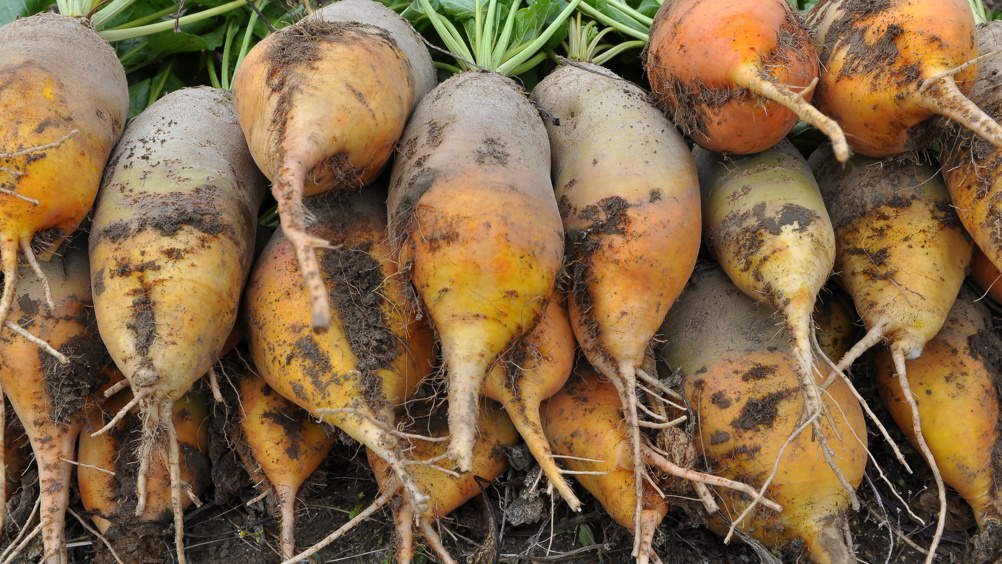The return of the mangelwurzel

To vets of a certain age the term mangelwurzel will stir memories of outrageous accents, country yokels and combine harvesters. But the mangelwurzel has a much longer history than a niche 1970s pop group. The mangelwurzel is a cultivar of Beta vulgaris, the common beet. The history of the crop goes back to the mid-18th century when special yellow-fleshed varieties which kept well were separated out for the first time as fodder beet. Further development led to larger root size and increased productivity. However despite it being perfectly edible, fodder beet never became a popular food for humans but remained principally a winter feed for livestock.
Although it was commonly grown as a food crop the use of fodder beet was limited by toxicity concerns, especially in relation to oxalate toxicity – with over 3 kgDM/day being considered a ‘killing’ dose. However, in recent years the use of fodder beet has increased exponentially especially in systems where grazed grass forms a major part of the diet.
Register now to continue reading
Thank you for visiting UK-VET Companion Animal and reading some of our peer-reviewed content for veterinary professionals. To continue reading this article, please register today.

